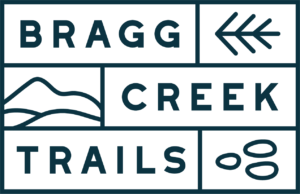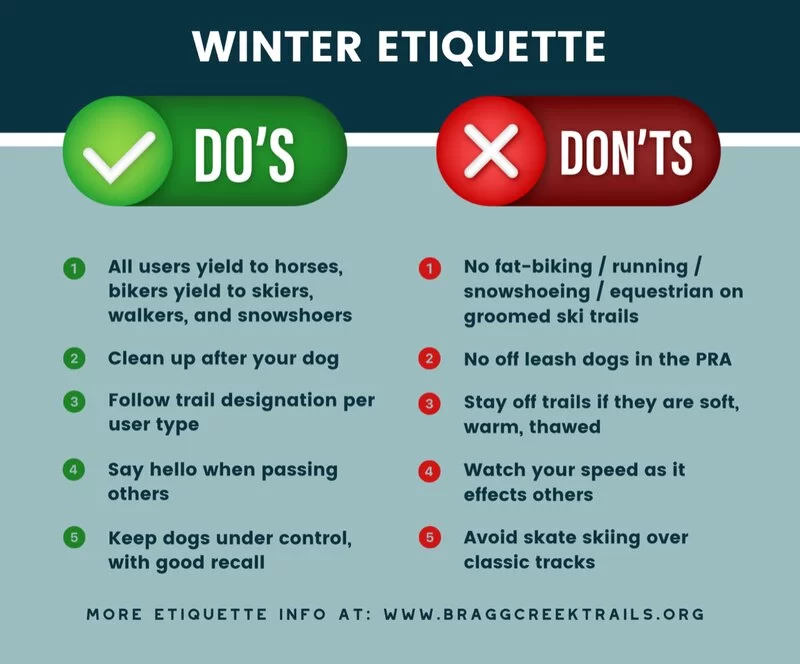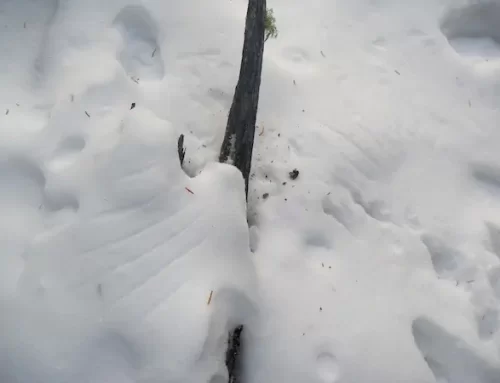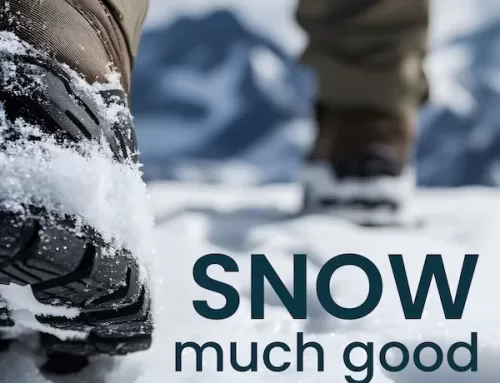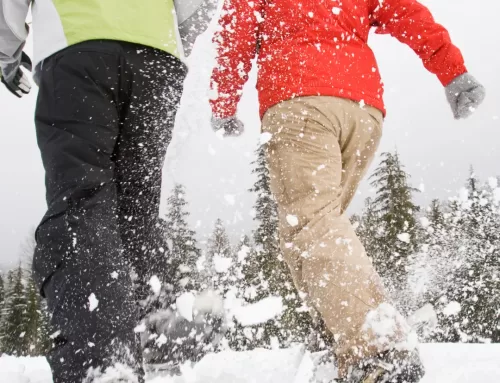We’ve seen our first accumulation of snow for the season, which definitely has people thinking about outdoor winter adventures. Whether you’re cross-country skiing, snowshoeing, fat biking, or partaking in another recreational opportunity, we’d like to take this opportunity to remind folks about winter-specific etiquette while you’re out on the trails.
When it comes to trail etiquette most of the summer expectations are transferable to the winter season with slight changes to accommodate the different activities. When it comes to trail right-of-way, cyclists must yield to all other users, while recreational users on foot, skis, or snowshoes are required to yield to equestrians. There are some situational conditions, however, where the right of way may be altered. Although cyclists should never expect other users to yield to them, if a biker is slogging up a tough incline the considerate thing to do would be to step aside and let them continue. A general rule to follow, for most users, is the uphill party has the right of way over the downhill party, however this rule changes when it comes to skiers. Uphill skiers are supposed to yield to downhill skiers so they can descend safely. When encountering equestrians on the trail remember to speak calmly when approaching, avoid abrupt movements, and step off on the downhill side of the trail, if conditions allow, to let them pass. When conditions are such that other users cannot easily move off the trail, equestrians should maneuver their horse into deeper snow to let other users pass on the trail. It’s also common courtesy to let faster individuals/groups pass if you’re moving slower than they are.
When it comes to groomed ski trails, these are reserved for skiers only once grooming has commenced. All other users are asked to refrain from using groomed trails as it negatively impacts the track sets. Skate skiers also need to be cognizant that they aren’t skiing over classic ski tracks. Please remember to ski on the right, pass on the left, and skate ski in the middle.
When winter biking, users are requested to ride bikes with tires measuring 3.7 inches wide or wider and with a tire pressure of 10 psi or lower. Bikes using narrower tires are prone to leaving deep ruts which create hazardous riding conditions once they’re frozen. Try to maintain your traction and avoid dragging, sliding, or spinning your tires. Riding with studded tires will also increase traction during icy conditions.
The West Bragg trailhead and surrounding area are categorized as a Provincial Recreation Area (PRA), meaning dogs are required to be on leash. Once past the PRA boundary signs, however, you are no longer within the PRA’s limits and dogs are allowed to be off-leash, provided they are kept under control, meaning they are not harassing livestock, wildlife, or other trail users. Always pick-up after your dog and ensure the bagged waste gets disposed of properly, not left on the side of the trails.
All winter users should refer to trail maps to ensure they are operating on the correct trails for their chosen sport or activity. The colour-coded maps are easy to decipher and the trails are well-signed so navigating the large network of trails shouldn’t be difficult. Remember to think before you sink. If you’re breaking through or leaving postholes on trails opt for a different trail or time. North facing trails stay frozen longer, while south facing trails are prone to softening and thawing sooner.
Lastly, be friendly. We’re all out there to have fun, get some exercise, and connect with nature and you’d be surprised how far a quick ‘hello’ to passing groups can go!
